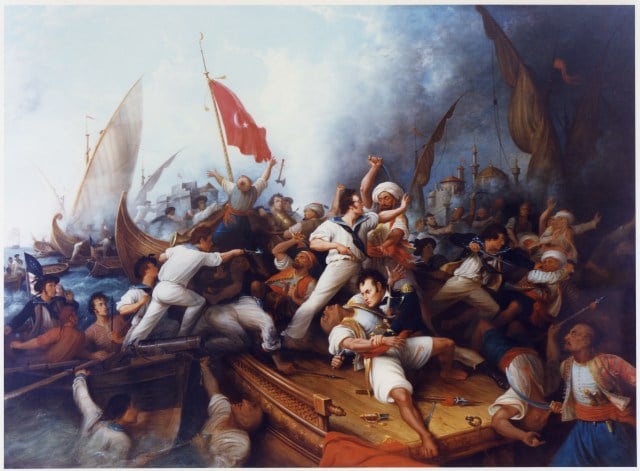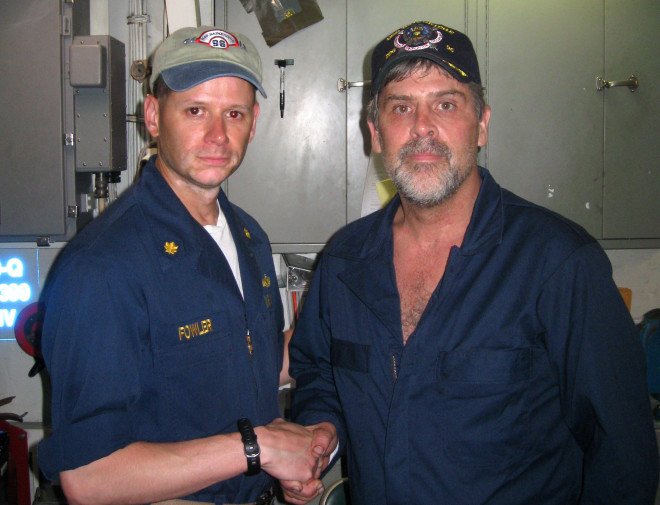
In the early years of this nation, President Thomas Jefferson found himself involved in one of the first conflicts overseas in the First Barbary War.
Jefferson, one of the first true isolationists, was reluctant to deploy forces in foreign engagements. However, faced with the demanding security of our merchant fleet and the growing concerns regarding our fragile economy, Jefferson had no choice but to protect the free flow of commerce and deploy the Navy.
With several newly commissioned frigates, the Navy would take station in the Mediterranean, off what is known today as Libya, in direct response to the piracy. The buccaneers of the Barbary States were not only seizing our merchant ships, but holding the crews hostage for enormous ransom and forcing them into slavery.
In the fall of 1803, one of the first operations in the Mediterranean was the blockade of the Port of Tripoli. During the operation, the U.S. Navy faced one of its most embarrassing moments in our nation’s early history. Capt. William Bainbridge, commanding the USS Philadelphia, ran the ship aground as it patrolled the channel leading to the port. After several attempts to free the ship, Bainbridge and his crew were captured.
Faced with the embarrassment of the Philadelphia anchored in the harbor of Tripoli, Commodore Stephen Decatur adopted a plan to rescue the ship. Using cover of darkness and flying the British colors, Decatur tacked his flagship, the USS Intrepid, next to the Philadelphia and directed his crew to “board” the ship.
Using innovative tactics that would later be praised by even British Vice Adm. Lord Horatio Nelson, Decatur and his crew overpowered the Tripolitans and reclaimed the Philadelphia. Unable to tow the ship from the harbor due to the lack of winds, Decatur reluctantly set the ship ablaze and retreated to safer waters without a single casualty.
After this remarkable rescue, Stephen Decatur was the name that would be synonymous with any counterpiracy operation that the U.S. Navy would take for the next 200 years. In the spring of 2009, it would be the Aegis-class destroyer Bainbridge that would come to the rescue against the modern-day pirates of Somalia.
With no coast guard to protect its territorial waters from foreign companies fishing the coastal waters off Somalia, several ingenious Somalis decided to form their own coast guard and apprehend the fishing vessels. With great initial success and receiving ransom payments in the tens of thousands of dollars, these modern-day buccaneers decided to expand their operation and capture larger vessels that might pay substantially higher ransoms.
In the summer of 2007, modern-day piracy off the coast of Somalia would become a national security issue for the United States.
Sailing off the coast of Somalia in support of the World Food Program, the M/V Danica White was hijacked and the crew was forced to spend almost 90 days in a pirate camp off the eastern coast of Somalia. This was not the first merchant vessel that was hijacked by the Somali pirates, but when negotiations were completed, the swashbucklers would receive more than $1 million. Not only did the pirates hit it rich, but this event would lead to a major change in the way ships transit through the Horn of Africa.
In the 2008 presidential election, then-candidate Barack Obama, whose views were not as extreme as Jefferson’s isolationist posture, stated that it was time to bring our troops home and reduce our involvement in foreign conflicts. But no sooner had he settled into the White House than he was faced with his first major national security dilemma.
In 2009, the pirates of Somalia were carrying out a record number of attacks and hijackings off the Horn of Africa. Despite the efforts of naval task forces from the European Union, NATO and the United States, these buccaneers had the upper hand.

On April 7, 2009, failing to adhere to the numerous warnings issued by the U.S. Maritime Administration to sail no closer than 600 miles off the Somali coast, the master of the M/V Maersk Alabama, Capt. Richard Phillips, decided to sail his vessel well within the warning area, and it resulted in the historic hijacking of the Maersk Alabama.
In most hijackings, the pirates take control of the ship and force the crew to maneuver it to one of the pirate camps located off Somalia. However, Phillips and his crew decided to take defensive measures. As the crew locked themselves in the engine room “citadel” and turned off the engines to render the ship useless, Phillips tried to negotiate with the pirate leader.
The crew would eventually seize one of the pirates and hold him hostage. Seeing that the situation was not in their favor, the pirates agreed to depart the ship on the Alabama’s lifeboat. However, in the process of releasing the pirate the crew held hostage, Phillips was forced into the lifeboat and taken captive by the pirates. Not only did they have a hostage, but they had an American citizen.
Faced with the prospect of Phillips ending up in Somalia, the National Command Authority quickly dispatched the destroyer Bainbridge and the frigate Halyburton to intercept the lifeboat and issued orders to the ships to take all measures necessary to prevent the lifeboat from reaching Somalia.
Additionally, a SEAL team was deployed to the Bainbridge. After several days of cat and mouse operations, the lifeboat ran out of fuel and was taken under tow by the Bainbridge. In the early morning hours of Easter Sunday 2009, the Navy SEAL team commander and then Cmdr. Frank Castellano, who was serving as the commanding officer of the Bainbridge (our modern day Stephen Decatur) determined that Phillips’ life was in danger.
Acting as all commanders should, they quickly authorized the attack on the pirates. Within seconds, three pirates in the lifeboat were killed, and Phillips was rescued.
It had been more than 200 years since piracy had made such a splash in the annals of naval history.
The future of our Navy is being tested every day, but as in the rescue operation of Stephen Decatur and the Bainbridge with forward-deployed maritime forces, we were able to quickly move to the scene and prevent an American citizen from being held hostage on foreign soil.
This post originally ran on Sunday in the San Diego Union-Tribune in cooperation with the U.S. Naval Institute.





